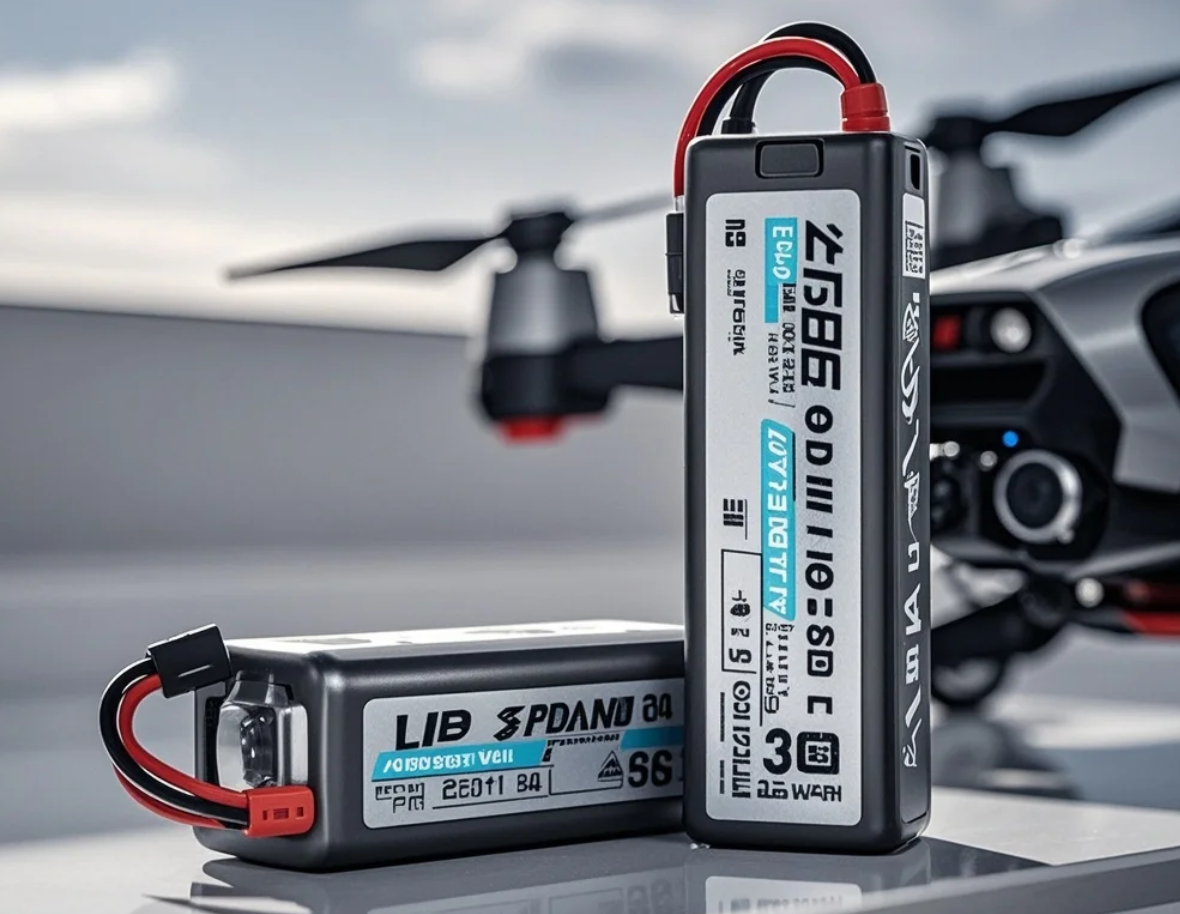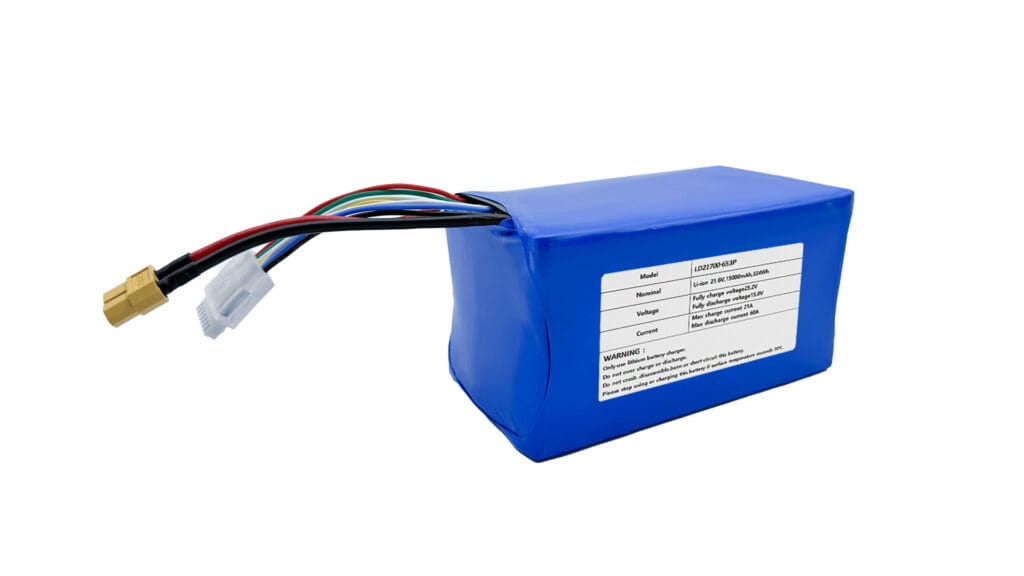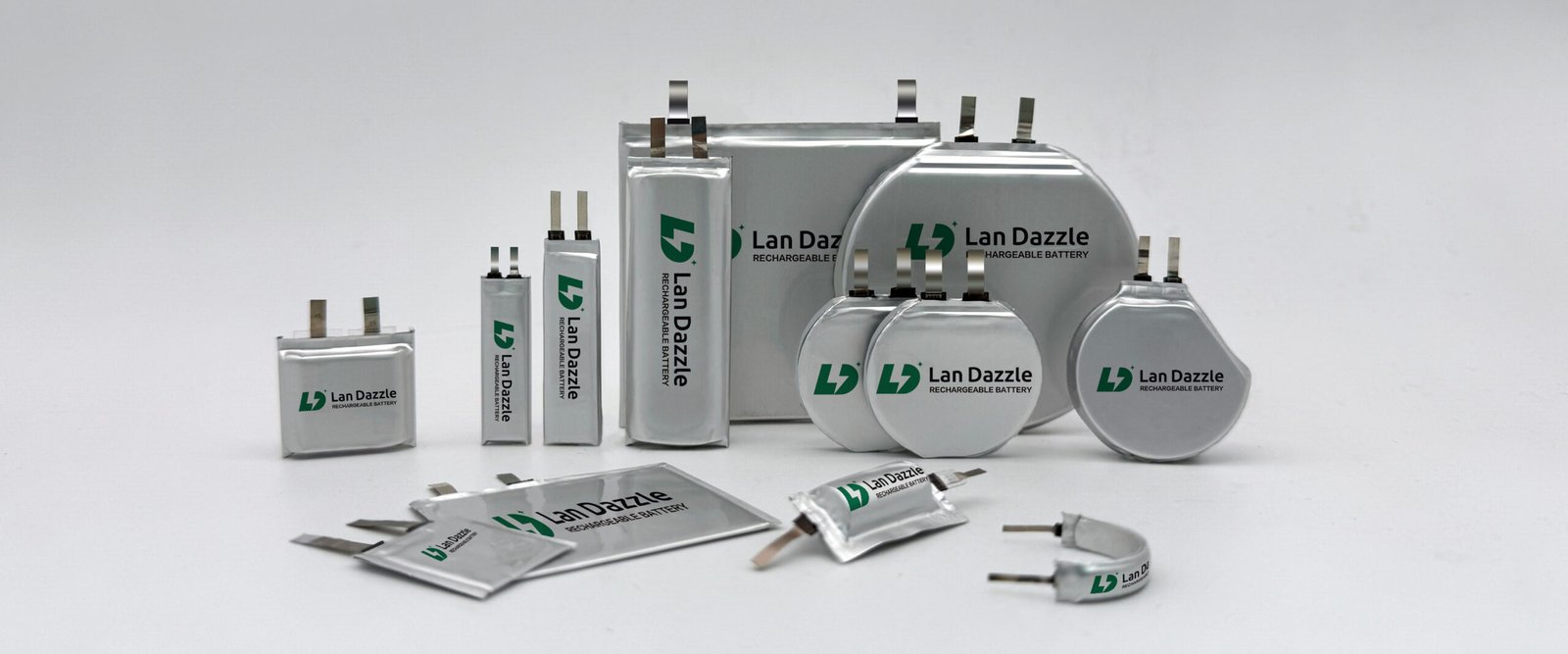The exhilarating world of radio-controlled (RC) hobbies, whether it’s tearing up the track with an RC car, performing breathtaking aerobatics with an FPV drone, or gliding an RC plane through the sky, hinges on one critical component: the battery. Among the most popular choices for powering these marvels is the Lithium Polymer (LiPo) battery. But delve into any RC forum or discussion, and you’ll quickly encounter a common point of deliberation: 2S vs 4S LiPo battery. What exactly is the difference, and which one is right for you?
Choosing the correct LiPo battery isn’t just about plug-and-play; it’s about optimizing performance, ensuring safety, and maximizing the lifespan of your RC gear. This comprehensive guide will demystify the distinctions between 2S and 4S LiPo batteries, empowering you to make an informed decision that perfectly aligns with your RC vehicle, your experience level, and your performance aspirations.
Understanding Batteria LiPo Basics: What Does “S” Mean?
Before we pit 2S and 4S against each other, let’s cover some LiPo fundamentals. A LiPo battery is a type of rechargeable battery that uses a polymer electrolyte instead of a liquid one, allowing for lighter weights and more flexible form factors – ideal for RC applications where every gram counts.
The core of any LiPo battery is its individual cells. Each LiPo cell has a:
- Tensione nominale: 3.7 volts (V) per cell. This is the average operating voltage.
- Fully Charged Voltage: 4.2V per cell. This is the peak voltage when the battery is fully charged.
- Minimum Safe Voltage: Around 3.0V to 3.2V per cell under load. Discharging below this can cause irreversible damage.
The “S” in a LiPo battery’s rating, like 2S or 4S, stands for Serie. When battery cells are connected in series, their voltages add up.
- A 1S battery has one cell (3.7V nominal).
- A 2S battery has two cells connected in series (3.7V + 3.7V = 7.4V nominal).
- A 4S battery has four cells connected in series (3.7V + 3.7V + 3.7V + 3.7V = 14.8V nominal).
This voltage is a primary factor dictating the power and speed your RC vehicle can achieve.
Two other crucial terms you’ll see on LiPo batteries are:
- Capacità (mAh): Measured in milliampere-hours, this indicates how much energy the battery can store, which generally translates to run time o flight time. A 5000mAh battery can theoretically deliver a current of 5000 milliamps (5 amps) for one hour.
- C-Rating (Discharge Rate): This indicates how quickly the battery can safely discharge its energy. A higher C-rating means the battery can deliver more current on demand, which is vital for high-performance applications needing quick bursts of power. It’s expressed as a multiple of the battery’s capacity (e.g., a 5000mAh 50C battery can theoretically discharge 5A * 50 = 250 amps continuously).
Now, let’s dive into the specifics of 2S and 4S LiPos.
Decoding 2S LiPo Batteries
A 2S LiPo battery, with its two cells in series, is a common entry point for many RC enthusiasts.
Voltage and Power Output of 2S LiPos
- Tensione nominale: 7.4V
- Fully Charged Voltage: 8.4V (2 cells x 4.2V/cell)
The power output of a 2S LiPo is generally moderate. It provides a good balance for many applications, offering manageable speed and acceleration, especially for those new to the hobby or for vehicles not designed for extreme performance.
Common Applications for 2S LiPo Batteries
You’ll frequently find 2S LiPo batteries powering:
- Beginner and Scale RC Cars: Many 1/10 scale 2WD and 4WD buggies, trucks (like the popular Traxxas Slash when set up for beginners), and highly detailed scale crawlers run excellently on 2S. The power is controllable, making it easier to learn driving skills.
- Smaller FPV Drones: Cinewhoops (small, often ducted drones for cinematic shots) and some smaller freestyle or micro FPV drones utilize 2S LiPos for their lighter weight and sufficient power for their size.
- Smaller RC Planes & Boats: Park flyers, smaller gliders, and some entry-level RC boats are designed around the 7.4V provided by 2S packs.
- Receiver Packs: In larger nitro or gas-powered RC vehicles, a 2S LiPo can sometimes be used (with a voltage regulator if needed) to power the onboard electronics like the receiver and servos.
Pros of Using 2S LiPo Batteries
- Peso ridotto: Fewer cells mean less material, generally resulting in a lighter battery compared to a 4S of similar capacity. This can improve handling and agility in some vehicles.
- More Affordable: Typically, 2S LiPos are less expensive than their higher cell-count counterparts.
- Easier on Components: The lower voltage and power output are generally less stressful on motors, Electronic Speed Controllers (ESCs), and drivetrain components, which is beneficial for entry-level or less robust setups.
- Good for Beginners: The manageable power makes it easier for newcomers to control their RC vehicles.
- Potentially Longer Run Times (in specific scenarios): In a vehicle optimized for 2S, a high-capacity 2S battery can provide ample run time due to potentially lower overall power consumption compared to a 4S setup in a more demanding vehicle.
Cons of Using 2S LiPo Batteries
- Limited Top Speed & Acceleration: Compared to 4S in the same or a comparable vehicle designed for higher voltage, a 2S battery will result in significantly lower top speeds and less aggressive acceleration or “punch.”
- Insufficient for High-Performance Demands: For larger vehicles (like 1/8 scale RC monster trucks) or applications requiring significant power (like aggressive FPV freestyle or racing drones), 2S may feel anemic or struggle to provide adequate performance.
Decoding 4S LiPo Batteries
Stepping up to a 4S LiPo battery means a significant jump in potential power, catering to those who crave more speed, more punch, and more extreme performance.
Voltage and Power Output of 4S LiPos
- Tensione nominale: 14.8V
- Fully Charged Voltage: 16.8V (4 cells x 4.2V/cell)
This doubling of voltage compared to a 2S battery (for the same cell type) translates directly into a much higher potential for power output. Motors will spin faster, and the overall system can deliver more thrust and speed.
Common Applications for 4S LiPo Batteries
4S LiPo batteries are the go-to for more demanding applications:
- High-Performance RC Cars: Most 1/8 scale buggies, truggies, and monster trucks (like the Arrma Kraton 4S or Traxxas Maxx) thrive on 4S power. It’s also common in speed-run vehicles where achieving maximum velocity is the goal.
- FPV Freestyle and Racing Drones: The majority of 5-inch and larger FPV drones designed for freestyle maneuvers or competitive racing rely on 4S LiPos (though 6S is becoming increasingly popular in this segment too). The high power-to-weight ratio is essential for agility and recovery.
- Larger RC Planes and EDF Jets: Aircraft requiring more thrust, such as larger sport planes, aerobatic models, or Electric Ducted Fan (EDF) jets, often utilize 4S (or higher) configurations.
- Performance RC Boats: Faster electric boats that need to push through water resistance benefit greatly from the increased power of 4S packs.
- High-End Airsoft AEGs: Some upgraded Automatic Electric Guns (AEGs) in airsoft can be configured to use 4S LiPos for higher rates of fire and snappier trigger response, though this often requires significant internal upgrades and careful tuning.
Pros of Using 4S LiPo Batteries
- Higher Top Speeds and Faster Acceleration: This is the primary reason enthusiasts upgrade to 4S. The increased voltage directly translates to more motor RPM and thus more speed and “oomph.”
- More “Punch” and Aggressive Performance: The ability to deliver power quickly makes vehicles feel more responsive and capable, especially for aggressive driving or flying styles.
- Potential for Higher Efficiency in Some Setups: For a given power output (Watts), a higher voltage system (4S) will draw less current (Amps) compared to a lower voltage system (2S) (since Power = Voltage x Current). Lower current can mean less heat buildup in wires, connectors, and the ESC, potentially leading to better efficiency and cooler components, provided the system is designed for it.
Cons of Using 4S LiPo Batteries
- Heavier and Larger: More cells mean more weight and often a larger physical size for the same capacity (mAh) compared to a 2S battery. This can affect a vehicle’s balance and handling.
- More Expensive: 4S LiPo batteries generally cost more than 2S batteries of similar quality and capacity.
- Increased Stress on Components: The higher power can put significantly more strain on motors, ESCs, gears, driveshafts, and other drivetrain components if they are not designed to handle it. Upgrading to 4S often necessitates ensuring the rest of the system is robust enough.
- Requires Compatible ESC and Motor: Critically, your Electronic Speed Controller (ESC) and motor mosto be rated for 4S voltage. Using a 4S battery on components designed only for 2S will likely lead to overheating and permanent damage.
Head-to-Head Comparison: 2S vs 4S LiPo Battery
Let’s put them side-by-side to highlight the key differences:
| Caratteristica | 2S LiPo Battery | 4S LiPo Battery | Notes |
|---|---|---|---|
| Tensione nominale | 7.4V | 14.8V | This is the primary electrical difference. |
| Fully Charged Voltage | 8.4V | 16.8V | Maximum voltage when the battery is fully charged. |
| Number of Cells | 2 cells in series | 4 cells in series | Defines the “S” rating. |
| Typical Power Output | Moderato | Alto | 4S offers significantly more power potential. |
| Speed & Acceleration | Lower potential | Higher potential | Higher voltage spins compatible motors faster. |
| Run Time | Depends on mAh & vehicle efficiency | Depends on mAh & vehicle efficiency | A 5000mAh 2S and a 5000mAh 4S have the same capacità, but power draw affects actual run time. |
| Weight & Size | Generally lighter & smaller | Generally heavier & larger (for same mAh) | More cells add weight and bulk. |
| Costo | More affordable | More expensive | Higher cell count and performance usually mean higher price. |
| Component Stress | Più basso | Più alto | Requires robust ESC, motor, and drivetrain for 4S. |
| Common Applications | Beginner RCs, small drones/planes, crawlers | Performance RCs, FPV racers, larger planes | Reflects the power output and user experience. |
Key Considerations When Choosing Between 2S and 4S
Making the right choice isn’t just about picking the one with more “power.” It’s about compatibility, suitability, and your overall goals.
1. Your RC Vehicle/Application
- Manufacturer’s Recommendation: This is paramount! Always check the manual or specifications for your RC car, drone, plane, or other device. It will state the recommended battery voltage (e.g., “2-3S LiPo compatible” or “4S LiPo recommended”). Exceeding this can lead to damage.
- Type and Scale of Vehicle: As discussed, smaller, lighter vehicles or those designed for scale realism often suit 2S. Larger, heavier, or performance-oriented vehicles benefit from 4S.
- Intended Use:
- Bashing (general fun driving): 2S can be great for smaller bashers. 4S delivers the big air and high speeds many associate with larger bashers.
- Racing (organized competition): Rules for specific racing classes will often dictate the battery (e.g., “2S spec class”).
- Crawling (slow, technical driving): 2S is very common for its smooth control, though some crawlers might use 3S for a bit more punch. 4S is generally overkill and can make smooth low-speed control difficult.
- FPV Freestyle/Racing: 4S has long been a standard for 5-inch quads, though 6S is gaining popularity for its potential for smoother power delivery and efficiency.
2. ESC and Motor Compatibility
This cannot be stressed enough: Your Electronic Speed Controller (ESC) e motor MUST be rated for the voltage you plan to use.
- Most ESCs will state their input voltage range (e.g., “2-4S LiPo” or “60A, 2-3S”).
- Motors also have voltage limitations, often implied by their size and KV rating.
- Using a 4S battery on a system designed only for 2S is a quick way to “fry” (irreparably damage) your ESC and possibly your motor due to over-voltage and excessive current draw.
- Conversely, using a 2S battery on a system designed for 4S and equipped with a very low KV motor might result in underwhelming performance.
3. Your Experience Level
- Beginners: For most RC applications, starting with 2S is highly advisable. The power is more manageable, making it easier to learn control and reducing the likelihood of immediate crashes or damage.
- Intermediate to Advanced Users: Once you’re comfortable and seeking more performance, 4S (if compatible with your gear) becomes an exciting option. It requires more skill to handle the increased speed and power.
4. Budget
- Battery Cost: 4S LiPos are generally more expensive than 2S LiPos of similar capacity and quality.
- Component Cost: If you’re building a system for 4S or upgrading a vehicle, you might need a more expensive, higher-rated ESC, a more robust motor, and potentially upgrades to drivetrain components (gears, driveshafts) to handle the extra power. These costs add up.
Safety, Charging, and Maintenance for LiPo Batteries
Whether you choose 2S or 4S, LiPo battery safety, charging, and maintenance practices are fundamentally the same and absolutely critical. LiPos pack a lot of energy into a small package, and mishandling them can lead to damage, fire, or injury.
- Use a LiPo-Specific Balance Charger: Always use a quality charger designed specifically for LiPo batteries that includes a balance function. Balance charging ensures all cells within the pack are charged to the same voltage, which is crucial for battery health and safety.
- Correct Charger Settings: Before charging, always verify your charger is set to the correct LiPo chemistry, cell count (2S or 4S), and charge rate (typically 1C, meaning 1x the battery’s capacity – e.g., a 5000mAh battery can be charged at 5 Amps).
- Never Leave Charging Unattended: This is a golden rule. While charging, batteries should be monitored.
- Charge in a Fire-Safe Location/Container: Use a LiPo-safe charging bag or a fire-resistant container (like an ammo box or ceramic pot) when charging. Keep away from flammable materials.
- Conservazione sicura: Store LiPo batteries at a “storage charge” of approximately 3.8-3.85V per cell when not in use for extended periods (more than a few days). Store them in a cool, dry place, preferably in a LiPo-safe bag.
- Handling Precautions:
- Avoid puncturing, denting, or crushing LiPo batteries.
- Prevent short circuits – never let the positive and negative terminals touch each other or a conductive surface simultaneously.
- Inspect batteries for any signs of damage (swelling/puffing, dents, damaged wires or connectors) before and after each use. Do not use or charge a damaged battery.
- Smaltimento corretto: Damaged or end-of-life LiPo batteries must be disposed of responsibly. This typically involves fully discharging them (e.g., via a lightbulb setup or specialized discharger) and then taking them to a battery recycling facility that accepts LiPos. Check local regulations.
A 4S battery contains more energy than a 2S battery of the same capacity, so if something does go wrong (like a short circuit or physical damage leading to a thermal event), the consequences can be more significant. This underscores the importance of diligent safety practices regardless of cell count.
Conclusion: 2S or 4S – Making the Right Choice for You
The debate of 2S vs 4S LiPo batteries ultimately boils down to suitability for your specific needs. There’s no universally “better” option; only the “right” option for your application, equipment, and experience.
- Choose 2S (7.4V) if: You’re a beginner, your RC vehicle is designed for 2S, you prioritize lighter weight in smaller applications, you’re involved in specific 2S racing classes, or your budget is a primary constraint. It offers a fantastic and manageable entry into the world of RC fun.
- Choose 4S (14.8V) if: You’re an experienced user seeking significantly more speed and power, your vehicle’s ESC and motor are explicitly rated for 4S, you’re involved in high-performance applications like 1/8 scale bashing or 5-inch FPV freestyle, and you’re prepared for the increased cost and potential stress on components.
Always prioritize the manufacturer’s recommendations for your RC gear. Understanding the fundamental differences in voltage and power delivery, carefully considering your equipment’s capabilities, and adhering to strict safety protocols will ensure you get the most enjoyment and performance out of your LiPo-powered adventures. Armed with this knowledge, you can confidently select the LiPo battery that will best power your passion.





